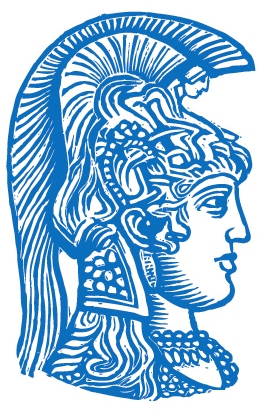 National and Kapodistrian University of Athens
Department of Biology
Biophysics & Bioinformatics Laboratory
National and Kapodistrian University of Athens
Department of Biology
Biophysics & Bioinformatics Laboratory
Protein Information |
|
|---|---|
| Protein Name | Solute carrier family 52, riboflavin transporter, member 3 |
| Accession Code | Q9NQ40 |
| Gene | SLC52A3 |
| Organism | Homo sapiens | Human (Taxonomy: 9606) |
| Part of Reference Proteome? | Yes |
| Sequence (Length: 469) |
Description |
Position in the Nuclear Envelope |
|
|---|---|---|
| Location | Location ID | Description |
| Nuclear Envelope | SL-0178 | The nuclear envelope is a membrane system which surrounds the nucleoplasm of eukaryotic cells. It is composed of the nuclear lamina, nuclear pore complexes and two nuclear membranes. The space between the two membranes is called the nuclear intermembrane space. |
| Nuclear Membrane | SL-0182 | The membrane surrounding the nucleus. This term is used when it is not known if the protein is found in or associated with the inner or outer nuclear membrane. | Membrane Topology |
| Topology | Source | Annotation Type |
| Transmembrane | UniProt | Sequence Analysis {ECO:0000255} | Assigned Ontology terms |
Description |
|
|---|---|
| Plasma membrane transporter mediating the uptake by cells of the water soluble vitamin B2/riboflavin that plays a key role in biochemical oxidation-reduction reactions of the carbohydrate, lipid, and amino acid metabolism (PubMed:20463145, PubMed:22273710, PubMed:24264046, PubMed:27702554). Humans are unable to synthesize vitamin B2/riboflavin and must obtain it via intestinal absorption (PubMed:20463145). {Experimental EvidencePubMed:20463145, Experimental EvidencePubMed:22273710, Experimental EvidencePubMed:24264046, Experimental EvidencePubMed:27702554, Curator InferencePubMed:20463145}. | Assigned Ontology terms |
Description |
|
|---|---|
| Brown-Vialetto-Van Laere syndrome 1 (BVVLS1) [MIM:211530]: A rare neurologic disorder characterized by sensorineural hearing loss and a variety of cranial nerve palsies, which develop over a relatively short period of time in a previously healthy individual. Sensorineural hearing loss may precede the neurological signs. The course is invariably progressive, but the rate of decline is variable within and between families. With disease evolution, long tract signs, lower motor neuron signs, cerebellar ataxia and lower cranial nerve (III-VI) palsies develop, giving rise to a complex picture resembling amyotrophic lateral sclerosis. Diaphragmatic weakness and respiratory compromise are some of the most distressing features, leading to recurrent chest infections and respiratory failure, which are often the cause of patients' demise. {Experimental EvidencePubMed:20206331, Experimental EvidencePubMed:20920669, Experimental EvidencePubMed:21110228, Experimental EvidencePubMed:22273710, Experimental EvidencePubMed:22633641, Experimental EvidencePubMed:22718020, Experimental EvidencePubMed:22824638, Experimental EvidencePubMed:27702554}. Note=The disease is caused by variants affecting the gene represented in this entry. Fazio-Londe disease (FALOND) [MIM:211500]: A rare neurological disease characterized by progressive weakness of the muscles innervated by cranial nerves of the lower brain stem. It may present in childhood with severe neurological deterioration with hypotonia, respiratory insufficiency leading to premature death, or later in life with bulbar weakness which progresses to involve motor neurons throughout the neuroaxis. Clinical manifestations include dysarthria, dysphagia, facial weakness, tongue weakness, and fasciculations of the tongue and facial muscles. {Experimental EvidencePubMed:21110228}. Note=The disease is caused by variants affecting the gene represented in this entry. | Database Associations |
| OMIM | 211500 211530 613350 |
| DisGeNET | 113278 |
Interactions with Nuclear Envelope proteins (1 interactors) |
|||
|---|---|---|---|
Interactions with other proteins (2 interactors) |
|||
Database | Links |
| UNIPROT | Q9NQ40 A0A2I6BQ49 A8K6P1 K0A6P4 Q5W1A0 Q5W1A1 Q8NCL7 Q96GD5 |
| Pfam | PF06237 |
| OMIM | 211500 211530 613350 |
| DisGeNET | 113278 |